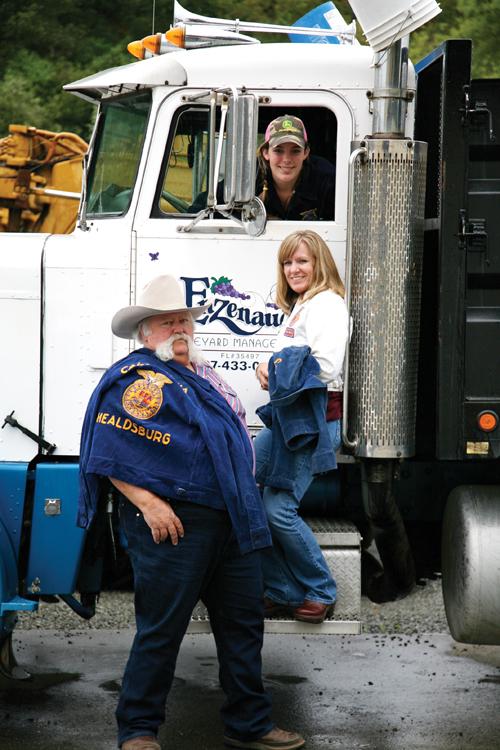With the Healdsburg Future Farmers Country Fair less than two
weeks away, a three-generation FFA family took the time to muse
over six decades’ worth of fairs.
Shelbi Enzenauer-Sereni represents the third generation in her
family to show in the fair. She wasn’t aware of her FFA
pedigree—and the family reputation she has to uphold—until
recently.
“I didn’t really know about it until freshman year of high
school. I was in 4-H also, since I was 10 or 11. They just kind of
started me out in it… so I didn’t really know I was third
generation until three years ago,” said Shelbi, a senior at
Healdsburg High School.
Shelbi’s mother and grandfather both had champion lambs, and her
mother was the FFA sweetheart back in her day. This year is
Shelbi’s last chance at a champion lamb, and the family noted that
some things haven’t changed.
“It’s still a competition between us and the Campbell kids,”
said Phil Enzenauer, Shelbi’s grandfather and the first generation
of the family to participate in HFFCF. (He estimates he started
showing in 1958, approximately a decade after the first fair, when
the fair had already moved to the ballpark.)
But some things have changed. Shelbi, casually sporty in pigtail
braids and a camouflage John Deere hat, would have been outfitted
differently back in her grandfather’s day.
“The women, if they showed beef, they wore dresses,” said Katie
Sereni, Shelbi’s mother and the second generation to show.
In the fair’s early days, white was the standard uniform for FFA
exhibitors, as it is today. But back then, white clothes weren’t an
easy thing to accomplish, and they carried with them a greater
sense of formality.
“When I was showing, if you had your whites on, you don’t move.
Cause you don’t have the washing machines,” said Phil.
By the time it was his daughter Katie’s turn to show, washing
machines were able to keep whites bright.
“My mom would wash my uniform in between each day,” Katie
recalled.
But even that modern convenience doesn’t cut it in today’s busy
world of multitasking parents.
“I have a different uniform for every day,” Shelbi said.
“So I don’t have to wash them in between,” Katie added.
It’s not just the dress code and sense of formality that have
changed over the years. The animals have changed, too. Over time,
the sheep’s wool has been shorn closer to the skin, and all
livestock has gotten heavier.
“My grand champion and reserve champion lambs were twins, and
they weighed 79 pounds apiece,” recalled Phil.
“And now they’re what, 140 pounds?” Katie replied.
In some ways, life was a bit more lax in the earlier days, with
kids camping at the fair overnight.
But of course, the older generation noted, kids also had more
responsibilities back then.
“The kids had to do everything. We had to clean up after
everything, too,” Phil said.
The two older generations agreed that the attitude back in the
day was less competitive, less political and, well—a little more
country.
“I showed pigs, too,” Phil recalled. “Pigs were different. They
were smaller. I remember one time the judge told me, ‘I’m not sure
which pig is showing who.’”
“That’s not very nice,” Katie said.
“Well,” Phil said, “It was different then.”
Staff Writer Lynda Hopkins can be reached at Ly***@hb*****.com.
53.9
F
Healdsburg
April 19, 2025








